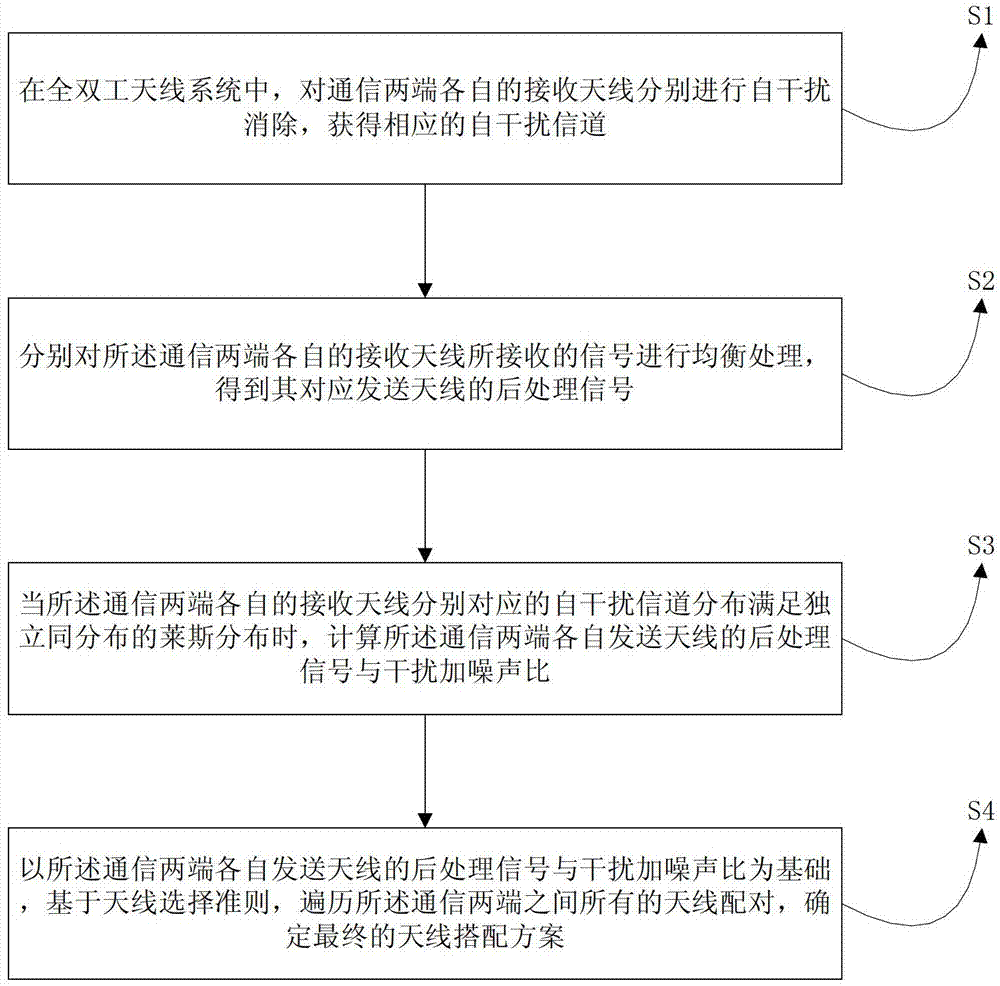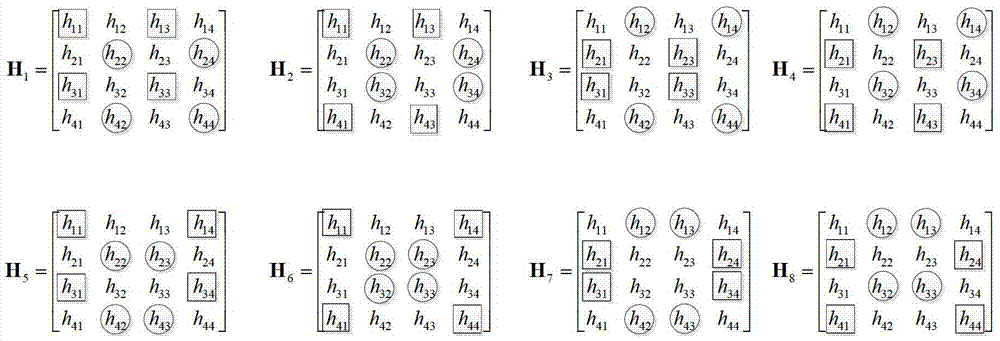Method for selecting full-duplex antenna in multiple-in multiple-out (MIMO) system
A full-duplex, antenna technology, used in baseband system components, diversity/multi-antenna systems, shaping networks in transmitters/receivers, etc., can solve problems such as no feasible method
- Summary
- Abstract
- Description
- Claims
- Application Information
AI Technical Summary
Problems solved by technology
Method used
Image
Examples
Embodiment Construction
[0054] A method for selecting a full-duplex antenna in a MIMO system proposed by the present invention will be described in detail below with reference to the drawings and embodiments.
[0055] Such as figure 1 As shown, the present invention provides a method for selecting a full-duplex antenna in a MIMO system, comprising the following steps:
[0056] S1. In a full-duplex antenna system, self-interference cancellation is performed on the receiving antennas at both ends of the communication to obtain corresponding self-interference channels;
[0057] S2. Perform equalization processing on the signals received by the respective receiving antennas at the two ends of the communication, to obtain post-processed signals corresponding to the transmitting antennas;
[0058] S3. When the self-interference channel distribution corresponding to the receiving antennas at the two ends of the communication satisfies the independent and identically distributed Rice distribution, calculate...
PUM
 Login to View More
Login to View More Abstract
Description
Claims
Application Information
 Login to View More
Login to View More - R&D
- Intellectual Property
- Life Sciences
- Materials
- Tech Scout
- Unparalleled Data Quality
- Higher Quality Content
- 60% Fewer Hallucinations
Browse by: Latest US Patents, China's latest patents, Technical Efficacy Thesaurus, Application Domain, Technology Topic, Popular Technical Reports.
© 2025 PatSnap. All rights reserved.Legal|Privacy policy|Modern Slavery Act Transparency Statement|Sitemap|About US| Contact US: help@patsnap.com



